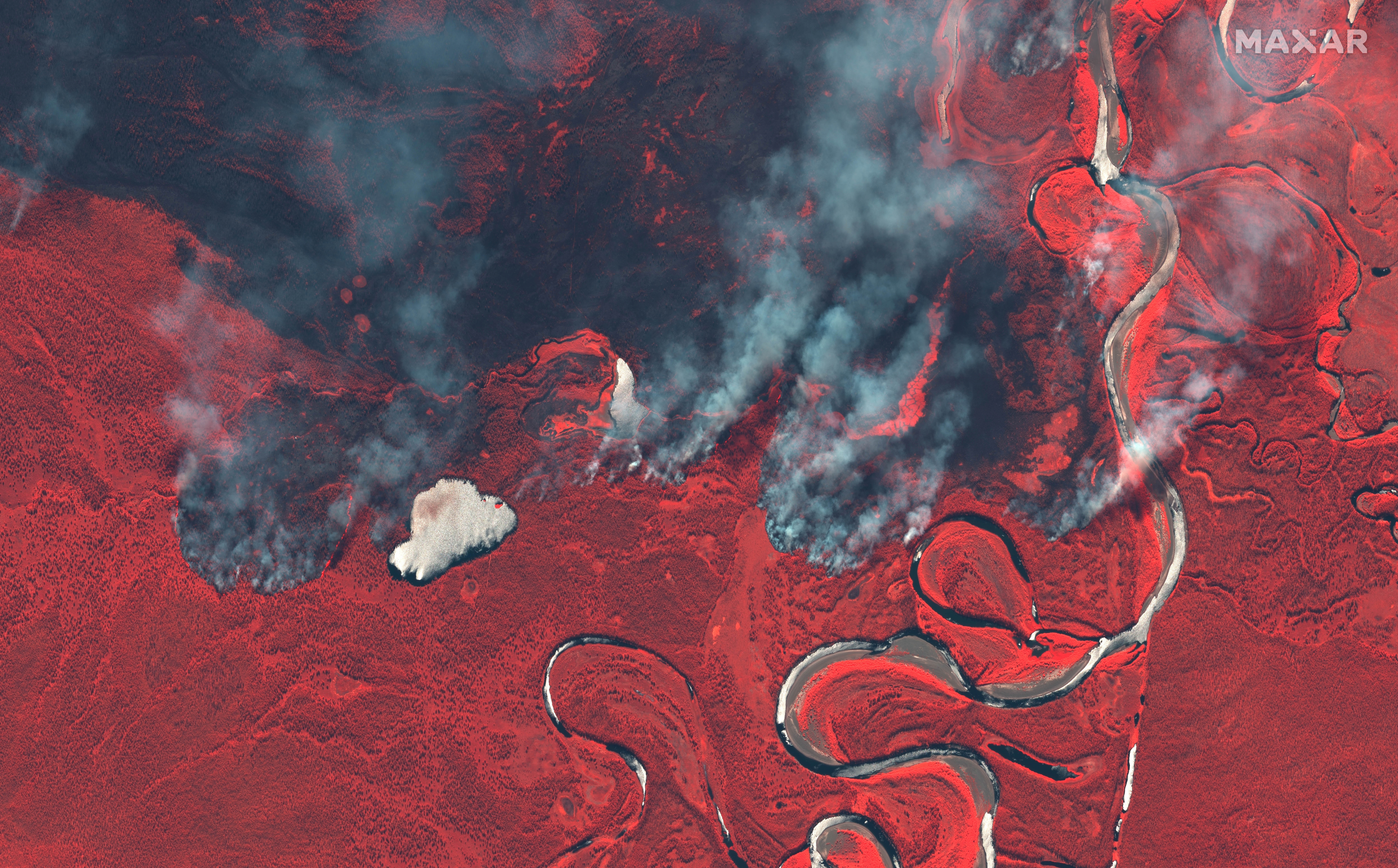A heat wave in Siberia signals dangerous Arctic warming
The town of Verkhoyansk in Siberia hit a record-high temperature of 100.4 degrees Fahrenheit on June 20, the highest temperature ever recorded within the Arctic Circle — and scientists are worried.
“I was shocked at the magnitude of it, but perhaps not necessarily completely surprised to see these types of spikes in temperature because this has been happening for a number of years now.”
“I was shocked at the magnitude of it, but perhaps not necessarily completely surprised to see these types of spikes in temperature because this has been happening for a number of years now,” says Susan Natali, Arctic program director at Woods Hole Research Center in Falmouth, Massachusetts. “The average temperature for June [was] 68 degrees Fahrenheit, so it’s quite a bit warmer than the average.”
The Arctic is warming roughly twice as fast as the rest of the planet. This is due primarily to a phenomenon called regional amplification, Natali says.
Related: Melting polar ice poses a serious global risk
Sea ice is a white surface that reflects the sun’s energy; seawater is a dark surface that absorbs the sun’s energy. The energy absorbed by surface water gets slowly released into the Arctic, causing the regional amplifying effect, Natali explains.
This feedback loop will continue to create more and more warming in the future, which will affect both the region’s sea ice and, perhaps more alarming, its permafrost — that is, the soil that is typically frozen year-round.
Permafrost soil, which is basically peat, holds more carbon dioxide than all of the world’s rainforests. If the Arctic melts and releases all that carbon, suddenly the global carbon budget — the amount of carbon the world’s nations can release in order to keep global warming below 1.5 or 2 degrees Celsius — looks a lot more difficult to achieve.
Related: A bold plan to slow the melt of Arctic permafrost could help reverse global warming
“Carbon emissions as a result of permafrost thaw are essentially going to use up anywhere from 25 to 40% of our remaining fossil fuel emissions budget,” Natali explains. “So it’s going to make it really challenging to keep to these temperature targets that were set out in these international climate agreements.”
Permafrost thaws in a couple of different ways, Natali says. There’s gradual thaw when permafrost thaws from the top down, and abrupt thaw, which occurs at extreme temperatures and can lead to complete ground collapse. A single summer like the one affecting the region can now lead to rapid thawing that is measured in tens of meters per year, instead of centimeters per year.
During these extremely warm summer months, the area also gets very dry, which raises the risk of wildfire, Natali adds. Wildfire, in turn, places the permafrost at greater risk because it removes the insulation that the ground provides.
There is also a phenomenon in the Arctic called “zombie fires,” which sounds like something out of a science fiction film but is quite real.
“There’s so much organic matter below the ground that the fires in the Arctic don’t just burn vegetation above ground, they burn peat in the organic material below ground,” Natali explains. “So, you can see a fire burning in August and September below ground, and then it resurfaces…in the spring. It just had been smoldering throughout the winter below the ground.”
Thawing permafrost recently made international headlines when an oil tank collapsed in the town of Norilsk, creating an environmental mess that could take 10 years to clean up.
The oil tank collapse got a lot of attention because of its magnitude, but communities in the far north are dealing with impacts of thawing permafrost on their infrastructure all the time, Natali says.
“The ground structure in the Arctic is maintained because there’s frozen ground below it, but when the ice that’s in the permafrost melts you get ground collapse, you get subsidence, you can get very extreme, abrupt events,” Natali says. “But even gradual events are enough to cause cracks in a building, or to cause gas tanks or other types of infrastructure to fall and to crack, and this is what’s happening in some areas of the Arctic.”
“These other incidents that don’t get these big headlines are really concerning because they are impacting people’s cultures and their health and their livelihoods,” she adds.
Many of us still tend to think about climate change as something that’s going to happen in the future, in 2050 or 2100, but in the Arctic, it’s happening now, Natali says.
“There are people being impacted by this now and there’s infrastructure that’s being impacted by this now,” she warns, “There are global implications for permafrost thaw and there are feedbacks on global climate that may be happening now and are expected to continue to happen into the future. But there are also these regional impacts, as you see ground collapsing on the people who are living in the Arctic.”
Natali does not like to think of climate change as an insurmountable problem, but some regions of the Arctic have already experienced “pretty extreme permafrost thaw,” she says.
“The actions that we take now in terms of our fossil fuel emissions will really have a big difference on how much of the Arctic will thaw and how many of these communities will be impacted, and how much economic cost there will be,” she cautions. “So it’s not an all or nothing situation in the Arctic. It’s recognizing that, yes, we’ve already bought in for some of these changes that are already happening [and] that are going to happen, but let’s act now and act soon to reduce that impact for people in the Arctic and globally.”
This article is based on an interview with Bobby Bascomb that aired on Living on Earth from PRX.
